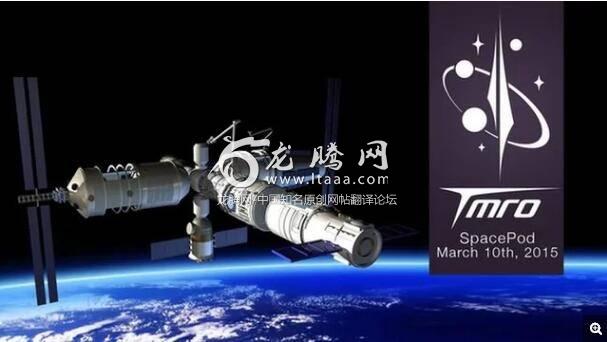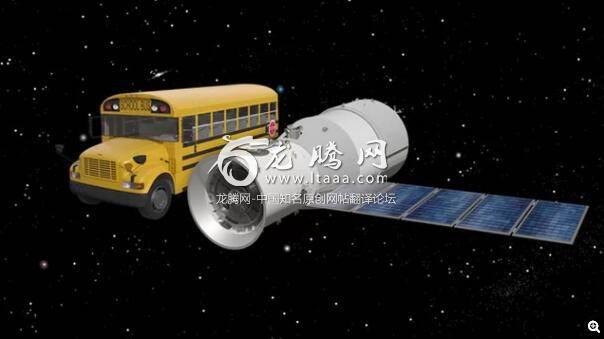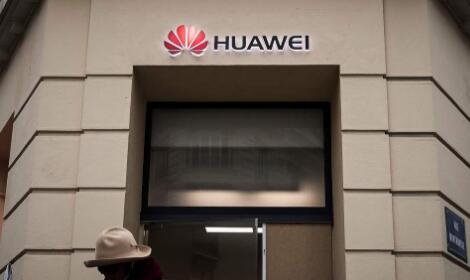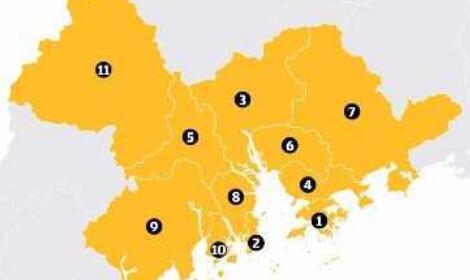中国空间站(天空一号)的坠毁:为何预测空间碎片将会在哪坠落如此困难。 [联合国媒体]
现在已经报废的中国空间站天宫一号正在坠入地球的途中,完成它的大气层再入阶段。尽管专家们在一年前已经意识到这件事将要发生,精确的时间仍然有着巨大的不确定性。但是随着空间站轨道高度的下降,这种不确定性正在逐渐降低,并且现在能够确定它将会在几天之内脱离轨道。
The now defunct Chinese space station Tiangong-1 is enroute to crash into Earth – completing its“atmospheric reentry phase”. While experts have been aware that thiswould happen for more than a year,there has been huge uncertainty around the exact timing. As the station’sorbital altitude has decreased, however, this uncertainty has gradually reducedand it is now possible to determine that it will deorbit within a few days.
现在已经报废的中国空间站天宫一号正在坠入地球的途中,完成它的大气层再入阶段。尽管专家们在一年前已经意识到这件事将要发生,精确的时间仍然有着巨大的不确定性。但是随着空间站轨道高度的下降,这种不确定性正在逐渐降低,并且现在能够确定它将会在几天之内脱离轨道。
Most of the 8.5-tonne station will burn up anddisintegrate as it passes through the atmosphere, though some debris may hitEarth. And although we have the capability to precisely control a spacecraftsuch as Rosetta –which orbited a few km away from comet67P while being 405m km away from Earth and travelling at55,000km per hour – we cannot actually predict the time and place ofTiangong-1’s potential impact on Earth, despite it being only 200km above us. Butwhy is it so difficult, and will science one day help us nail such predictions?
这个8.5吨重的空间站大部分将会在它经过大气层时烧毁并解体,尽管仍有一部分残骸可能会击中地球。虽然我们有能力精确控制像罗塞塔这样的航天器,罗塞塔号以几公里高的轨道环绕距地球4.05亿公里远的彗星67P,时速达到了每小时55000公里,我们仍不能精确预测天宫一号可能撞击地球的时间与地点,尽管它距离我们只有200公里远。为何预测如此困难,科学家会在某一天帮助我们精确预测吗?
Newton’s laws tell us that satellites orbit theEarth in perfectly circular orelliptical orbits, repeating their path again and again (assumingthat gravity is the only force acting on them). However, this is not true atlow altitudes, say below 1,000km, because the satellite is then moving throughthe Earth’s atmosphere. This causes “aerodynamic drag” (air resistance) – aforce that opposes the satellite’s velocity, which effectively turns the orbitinto a downward spiral towards the Earth’s surface.
牛顿定律告诉我们卫星环绕地球呈正圆或者椭圆轨道,并且不断地重复它们的轨道(假设重力是唯一作用在它们上的力)。但是这在一个较低的高度就不正确了,比如说1000公里高,因为此时卫星正在穿过地球的大气层。这就导致了“气动阻力”(空气阻力),这种力与卫星速度相反,它会有效的将卫星轨道变成一个朝着地球表面的螺旋式下降轨道。
In theory, we can calculate drag perfectly topredict the path of a satellite. This can be done using an equation thatdepends on the velocity of the satellite (v2), the density ofthe atmosphere (ρ), a numerical coefficient thatdepends on the shape of the satellite and its orientation with respect to theairflow (C), and the object’s area (A). For those whoare interested, the equation is: D = ½ × C × ρ × A × v2. But you don’thave to understand the equation to grasp why it is so hard to calculate drag.
理论上说,我们可以精确计算阻力并预测卫星轨道,这可以通过一个方程式来进行,它基于卫星的速度(v2),大气层密度(ρ),一个由卫星形状以及对气流的朝向决定的数值系数(C),以及物体面积(A)。有些人可能对这个方程感兴趣,它是D = ½ × C × ρ × A × v2。但是你不必弄懂这个方程来理解为何计算阻力如此困难。
The spacecraft’s velocity is easy to measurefairly accurately using observations. However, the other parameters are highlyuncertain – making it difficult to determine Tiangong-1’s path. For vehiclessuch as cars and aircraft, C can beestimated theoretically or with computational fluiddynamics and measured experimentally in a wind tunnel. The mainproblem here is that Tiangong-1’s shape is complex, and the object isuncontrolled and tumbling chaotically, resulting in a constantly changing C.
行日暗器的速度可以通过观测精确测量。但是,其他的参数确实高度不确定的,这就使得确定天宫一号的轨道非常困难。对于像车或飞机这样的载具来说,C可以通过理论上的估计或者通过计算机流体动力学来进行风洞实验测量。最主要的问题就是天宫一号的形状是复杂的,它是不受控的并且在无序地翻筋斗,这就使得C在持续的变化。
The other unknown is the density of theatmosphere, which decreases with altitude.However, particularly at high altitudes, this varies due to a number ofunpredictable factors – the most important of which is solar activity.
另一个不知道的参数就是大气层密度,它会随着高度而减小。但是,特别对于高轨来说,它会受到许多不可预知的因素影响,最重要的就是太阳活动。
The solar magnetic activity follows an 11-year cycle,which results in a periodic increase and decrease of the amount of radiationand charged particles emitted. These interact with a part of the Earth’satmosphere called the ionosphere, changing its density. A good indicator ofsolar activity is the number of observed sunspots. Butwhile the solar cycle can be monitored, the level of activity also changesunpredictably, leading to unpredictable changes in the density of the atmosphere.
太阳磁场活动遵循一个11年的循环,这就导致一个周期性的辐射量增减并且发射带电粒子。这与地球大气层的一部分,叫做电离层,发生相互作用,改变它的密度。观测太阳活动状态的一个好指标是观测到太阳黑子的数量,但是尽管太阳活动周期能被监测,这种活动级别的改变也无法预测,这也导致大气层密度的改变无法预测
Another important factor is that the satellitewill disintegrate and burn during the final phases of reentry, adding furtheruncertainty to all terms of the drag formula.
另一个重要的影响因素是卫星会在再入的最后阶段解体烧毁,这也对阻力公式的所有参数增加了不确定性。
This explains why it is near impossible topredict an impact point (or region) along the satellite path. That said, youcan get a rough idea of the areaof probable impact, based on the inclination of the spacecraft’sorbit. We know that Tiangong-1’s orbit only enables it to reenter between thelatitudes of -43 (north) and +43 (south) degrees around the equator. As you cansee in the map above, this leads to an extended band of probable impact, mainlysouth of the equator.
这解释了为何沿着卫星轨道预测一个撞击点(或区域)几乎是不可能的。即便如此,你仍能够知道大概知道可能的撞击区域,基于卫星轨道的倾角。我们知道天宫一号只能在赤道附近,北纬43°到南纬43°之间再入。如图所示,这包括一片广大的可能撞击区域,主要是赤道以南(这里我没看的很懂)
Technological improvements
技术提升
To prevent accumulation of debris in orbitaround the Earth, which can pose a threat to spacecraft and satellites, it isnow recommended that satellites in low Earth orbit are commanded to reenterEarth’s atmosphere within 25 years ofmission completion.
为了预防地球附近的轨道碎片聚集,对航天器和卫星产生危害,现在有建议低轨卫星应该在完成任务的25年内受控再入地球大气层。
It is therefore of growing importance to beable to avoid threats to population and objects on Earth as these spacecraftcrash. Models and experimental data for atmospheric drag are continuously beingimproved, but it is unlikely that they will ever reach the required accuracy toallow us to predict exact impact points.
因此,这些航天器坠毁时避开人口密集区或地面目标就越来越重要。空气阻力的模型以及实验数据正在不断提升,但是这些数据和模型恐怕无法达到要求的精度,使我们能精确预测撞击点。
Instead, future satellites need to be designedwith reentry as a crucial part of the mission. Active and controlled reentry –for example, by using drag sails or thrusters –could reduce uncertainties and ensure that the satellite burns completely inthe atmosphere while following a trajectory carefully calculated in advance.
作为替代,未来的卫星任务非常重要的一部分任务就是计划再入大气层。主动的,受控的再入,比如说使用海锚或推进器,这可以减少不确定型并使用一个提前进行精确计算的轨道确保卫星能在大气层中完全烧毁。
Satellites should also be designed and testedsuch that, during reentry, they fragment in a desired way and not cause athreat to Earth. This concept, analogous to controlled deformations in cars toprotect the passengers in an accident, is known as “design for demise”.This is not something that is enforced today.
卫星也应该被设计以及测试,在再入阶段,它们的碎片能以我们想要的方式运行并且不会危害到地球。这种概念,与汽车在事故中受控形变来保护乘客的想法类似,被称为“设计消亡”。在今天这种概念并没有执行。
There can always be improvements in safety. Buteven though the spacecraft’s reentry isn’t controlled or predictable, weneedn’t worry about being struck by it. The odds of you being hit are next tozero, while the chances of it striking anyone at all are about one in 3,200.
安全性总是能够提升的。但是即使是航天器的再入不是受控的或者可预测的,我们也不需要担心被击中。你被击中的可能性几乎为零,而它击中任意一个人的可能性是1/3200.
版权声明
我们致力于传递世界各地老百姓最真实、最直接、最详尽的对中国的看法
【版权与免责声明】如发现内容存在版权问题,烦请提供相关信息发邮件,
我们将及时沟通与处理。本站内容除非来源注明五毛网,否则均为网友转载,涉及言论、版权与本站无关。
本文仅代表作者观点,不代表本站立场。
本文来自网络,如有侵权及时联系本网站。
图文文章RECOMMEND
热门文章HOT NEWS
-
1
他们认为,协商失败的峰会实际上符合中国的利益,而且北京的影响力将增加,因...
- 2
- 3
- 4
- 5
- 6
- 7
- 8
- 9
- 10
推荐文章HOT NEWS
-
1
这是中国中部河南省郑州的一个普通的星期六。富士康工厂大楼上空笼罩着...
- 2
- 3
- 4
- 5
- 6
- 7
- 8
- 9
- 10













